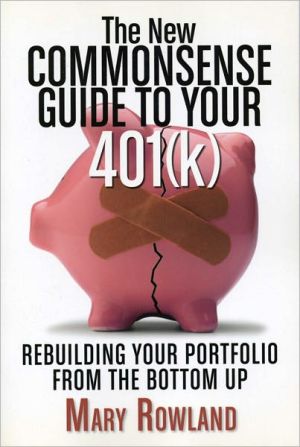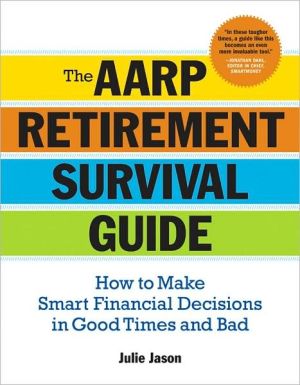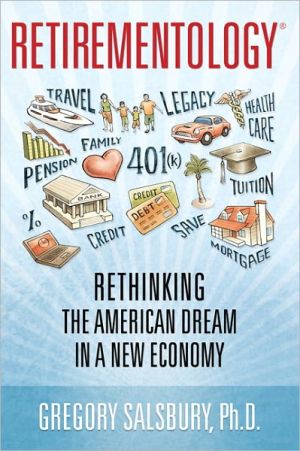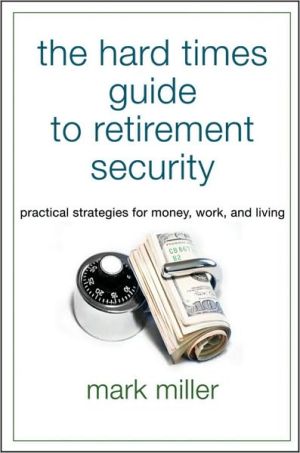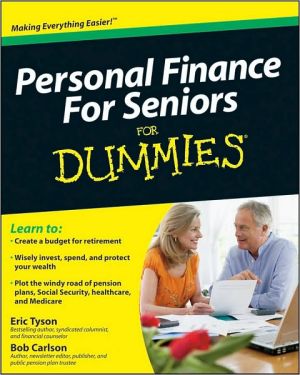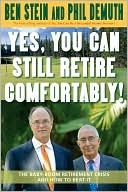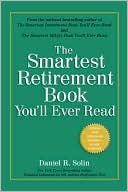The New Commonsense Guide to Your 401(k): Rebuilding Your Portfolio from the Bottom Up
Since the credit crash, investors have been searching for answers as 401(k) accounts have suffered unprecedented declines. Not only have markets been tumultuous but new regulations and concerns regarding hidden fees have been introduced to an already opaque area of investing.\ Despite the severe economic retreat in 2008-2009, one thing hasn't changed: 401(k) accounts—because of their tax benefits—are still the best way for most people to invest for retirement. Mary Rowland breaks down how...
Search in google:
Despite the severe economic retreat in 2008-2009, 401(k) accounts—because of their tax benefits—are still the best way for most people to investment for retirement. And, almost without exception, the books in the marketplace are pre-credit crunch, diminishing their relevance to consumers. Mary Rowland, a former personal finance columnist for The New York Times, breaks down how they work, why they are still a smart investment, how to keep an eye out for hidden fees, and why now is the time for investors of all ages to start reinvesting in their retirement.
Introduction 1Part 1 The New Retirement Landscape 21What Happened? 231 Not Your Father's Gold Watch 282 "Management" Is Not a Career Choice 303 Dip a Toe In 324 Calculate Retirement Needs 345 How to Fill the Gaps 366 Will You Get a Pension? 387 Will You Get Anything from Social Security? 408 Check Earnings and Benefits 429 The Rule of 72 4410 Start Early 4611 Why Choose the 401(k) Plan? 4812 What about Roth? 5013 Contribute, Contribute 5214 Protecting Your Income 54Part 2 401(k) Plan Basics 57Planning for die Future 591 The Three Main Players 642 What Your Employer Wants 663 What the Government Wants 684 How to Use This Stuff 705 The Limit 726 What Is Vesting? 747 Qualifying Rules 768 Hardship Withdrawal 789 Information about Your Plan 8010 Is My Plan Safe? 82Part 3 How to Get In and Get Out 85Contributing to Your 401(k) Account 871 Where to Get Help 902 The Match Makes the Magic 923 Automatic Enrollment 944 Taking Loans 965 Beneficiary Designations 986 If the Plan Fails the Test 1007 After-Tax Contributions 1028 Supplemental Plans 1049 Getting Out Early 10610 Changing Jobs 10811 Coordinating with Your Spouse 110Part 4 Investing 113Saving for Retirement 1151 What I Did 1162 Expert One 1183 Expert Two 1204 Expert Three 1225 Behavioral Finance 1246 Taking Risk 1267 What Risk? 1288 What Do You Have to Lose/Gain? 1309 Risk Basics 13210 Correlation 13411 More Tools 13612 Diversify 13813 Why Stocks? 14014 Index Funds 14215 Active Funds 14416 Investment Style 14617 Bonds 14818 International Investing 15019 MoneyMarkets 15220 Investing in Gold 15421 Dollar-Cost Averaging (DCA) 15622 Mutual Funds 15823 Exchange-Traded Funds (ETFs) 16024 Target-Date Funds 16225 Expenses 16426 Get the Prospectus 16627 Rebalance 16828 What Not to Buy 170Part 5 Preparing for Change 173The Next Step 1751 Get Real 1782 Thinking about Tomorrow 1803 Pay Off Debt 1824 Your Mortgage 1845 Paperwork Matters 1866 How to Organize It 1887 What's Your Net Worth? 1908 Your Financial Statement 1929 Your Portfolio 19410 What to Do with Stocks 19611 Delay Social Security 19812 Plan for Healthcare 200Part 6 Steps to Take in Retirement 203Once More with Confidence 2051 Lump Sums 2062 Leaving the Money Where It Is 2083 Convert to Roth? 2104 Required Distributions 2125 Longevity Risk 214Part 7 Retirement Plans by Other Names 217401(k) Plan Alternatives 2191 403(b) Plans 2202 ERISA or No? 2223 403(b) Plan Reform 224Resources 227Index 231
